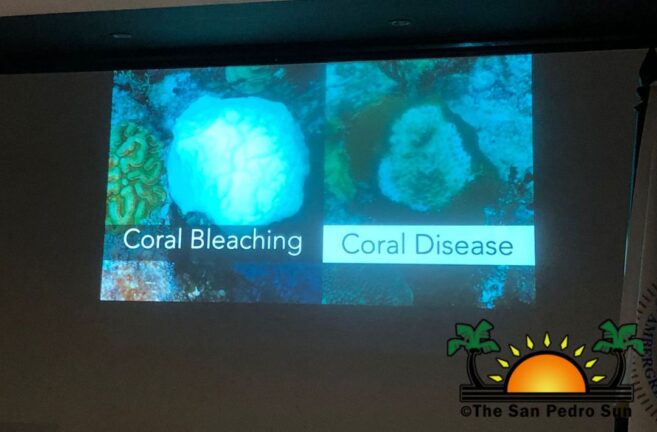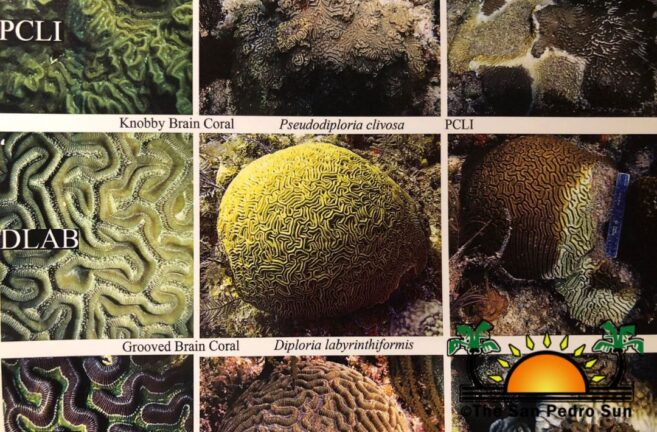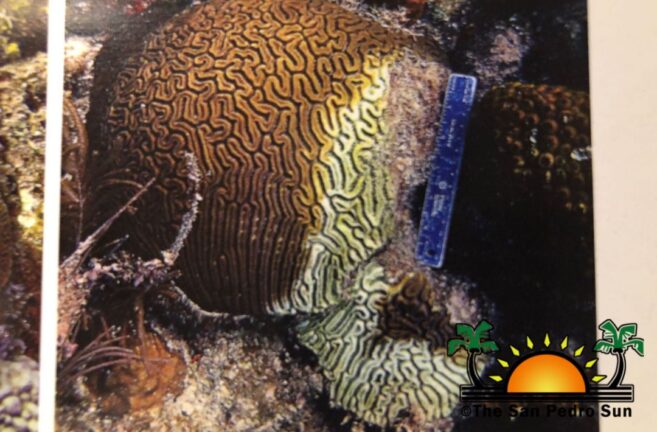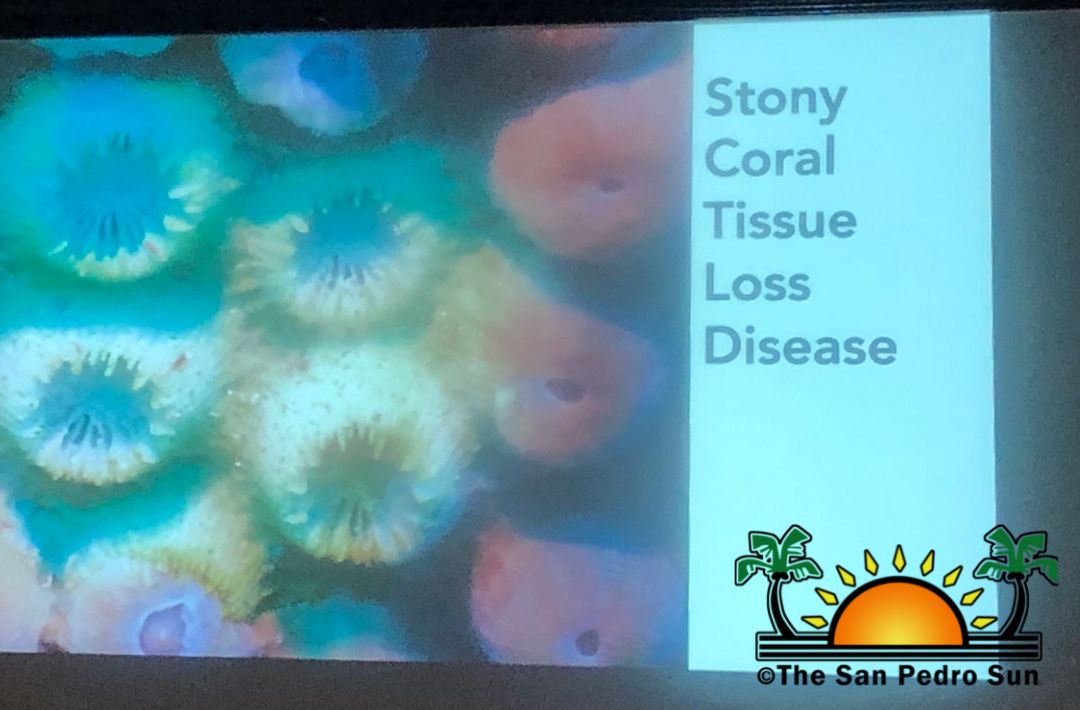A presentation over the weekend in San Pedro Town, Ambergris Caye, was held to raise more awareness about the Stony Coral Tissue Loss Disease and other conditions affecting the Belize Barrier Reef. The first informative session was on Friday, July 15th, at the San Pedro Town Council conference room and was facilitated by the Fisheries Department and other partner organizations. Tour guides and operators eager to learn about the diseases killing coral reefs and what is currently being done in Belize to tackle the plagues attended the presentation.
The lecture covered a few of the diseases affecting the reef. The first one explained was ‘Bleaching,’ caused by stress on the coral. This can be triggered by the effects of climate change, like ocean acidification or warming. According to the presentation, Coral Bleaching can also be caused by developing projects like the industry agriculture urbanization. Another disease affecting corals include White Patch Disease, caused by warming seawater. The other illness discussed at the presentation was the White Plague, which causes rapid tissue loss in corals.
Stony Coral Tissue Loss Disease
Stony Coral Tissue Loss Disease (SCTLD) is of paramount concern and spreads and kills corals swiftly. The informative session explained that one way to identify it is after the coral turns brightly white. Corals quickly begin to lose living tissue; if there is no treatment, they can die within weeks or months. The cause of this disease is still unknown, but some evidence points to the culprit as a bacterial pathogen transmitted by touch and water circulation.
Treatment
SCTLD was first detected in Florida, USA, in 2014. Since then, it has spread to the Caribbean region. The primary corals affected in Belize include Brain Corals, Pillars, and Boulder Corals. Different treatments have been applied with different results. According to the presentation, the survival level is 3% if nothing is done. If a physical barrier is placed around the affected coral, the survival level is 5%, while if a Chlorine Barrier is applied, there is a 10% chance of survival.
As coral experts continue to look for more robust solutions, an antibiotic barrier known as Clay/Epoxy is delivering a 25% survival rate. The Base2B antibiotic barrier is the most efficient treatment, catapulting the survival level to 78%.
The results in Belize
According to records from the presentation, the treatment experienced 31% of no response. As the efforts continued, the lesions stopped after the second treatment, and there was an improvement of 17%. Following the first treatments, the results show a whopping 52% efficiency with the antibiotic barrier Base2B treatment.
The battle against this disease killing the reef continues, and tour operators and tour guides are asked to join the campaign to identify affected areas and report them. Tour guides, operators, and anyone else suspecting signs of SCTLD are asked to report it to the Hol Chan Marine Reserve in San Pedro, either by calling 226-2247 or visiting their offices on Caribeña Street.


